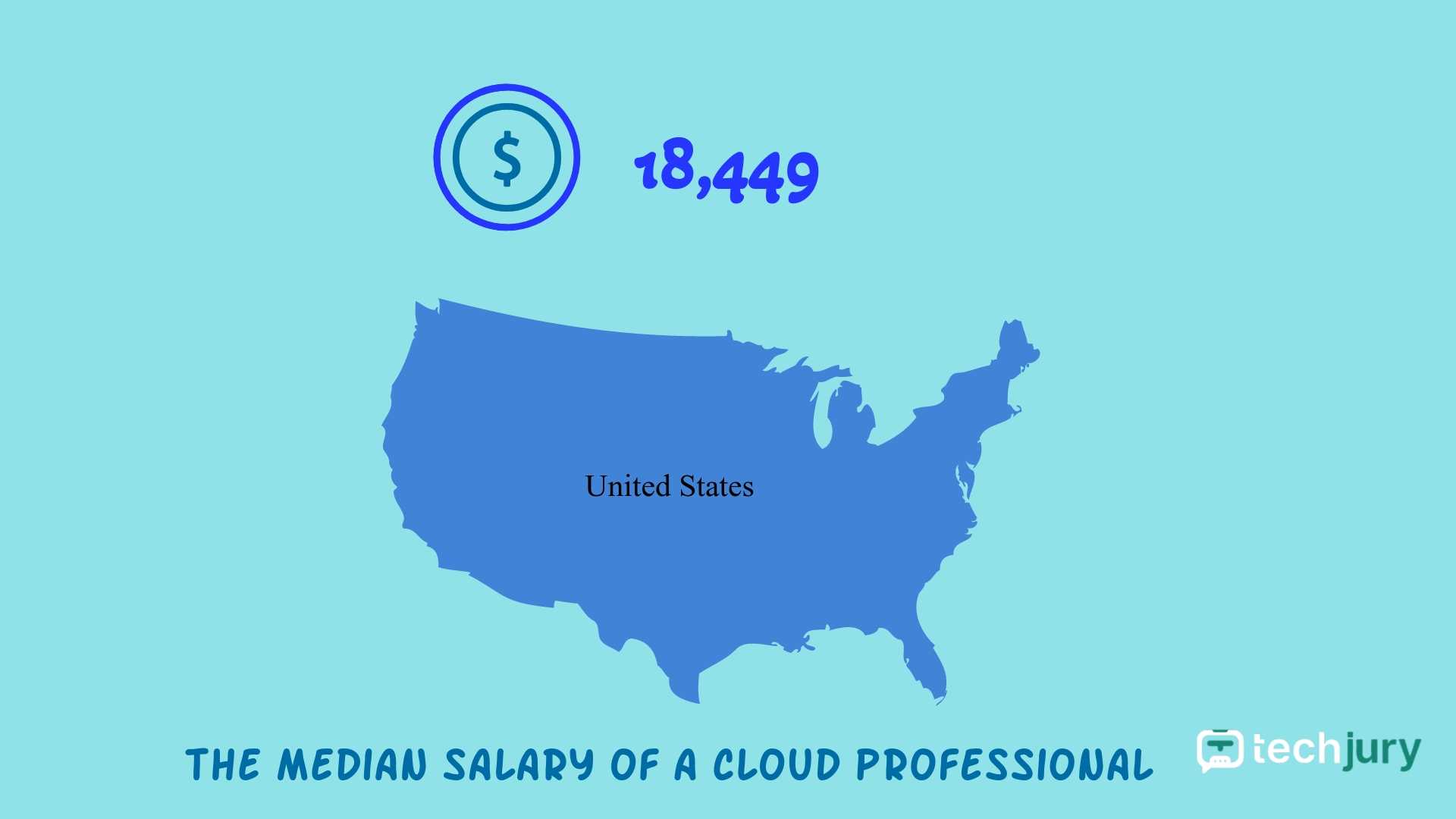

Updated · Feb 11, 2024
Updated · Jan 03, 2024
Aditya is an Azure DevOps and Infrastructure Virtualization Architect with experience in automation,... | See full bio
If I was asked to describe myself using just a few words, I’d go with digital marketing expert, ex... | See full bio
Hi, I'm Hijab Shaikh, one of the co-founders of CXI Solutions, a leading company that specializes in... | See full bio
Cloud computing enables remote internet access to data and applications, utilizing virtualization technology for application creation, configuration, and customization.
Statistics reveal the industry's exponential growth since then. Its revenue is forecasted to grow at a CAGR of 18.9%, reaching $623 billion by 2023.
Data also reveals that 81% of all businesses and organizations have reported having a multi-cloud strategy already laid out or in the works.
Let's look at some curious cloud computing facts and stats to show how far we have gone.
Editor’s Choice:
|
AWS is number one in cloud computing, with a global market share of 32% as of June 2023.
While free platforms like Dropbox and iCloud continue to excel as the most popular free file storage services, Amazon Web Services is the clear winner according to cloud computing stats in 2023.
Check out some impressive cloud statistics growth in 2023.
(AAG-IT)
At the beginning of 2023, Amazon Web Services (AWS) had a market share of around 33%, the largest cloud service globally. Still, after the first quarter of 2023, AWS's market share decreased to 32% due to an unexpected drop in share prices.
As of the second quarter, Amazon Chief Financial Officer Brian Olsavsky reported that cloud customers kept trying to slim down their bills. Amazon was helping them do so to build long-term relationships.
That meant revenue growth rates were about 5% points lower in April than in the first quarter.
(SAAS Worthy, Statista)

Cloud computing started in the US, and they have been leading the way since 2015. Despite it’s early start, other countries have yet to adopt these.
Large enterprises worldwide require cloud technology for connectivity, with many countries adopting it and aiming to match the US in adoption over the next decade.
However, countries like Japan, Cameroon, Angola, and Ethiopia have a much lower cloud adoption rate than many other countries due to strict regulatory concerns and differing cultural perspectives on cloud technology.
(Statista)
About 61% of respondents from a global survey expect cloud usage to be slightly higher than expected due to COVID-19.
Organizations rely on cloud-based services for record or data keeping, enabling access to applications and data from various countries while employees work remotely.
(TechTarget & LinkedIn)
PaaS is increasingly becoming a go-to solution for businesses looking to introduce cloud environments. It doesn’t require upfront fees since it uses the pay-as-you-go payment model. It’s also more flexible than SaaS.
Additionally, experts foresee vendors merging Infrastructure as a Service (IaaS) and Software as a Service (SaaS) into PaaS for better service.
A survey by TechTarget reveals that the merger of IaaS and SaaS to PaaS will see PaaS will generate a revenue of close to $164.3 billion by 2026. In Europe, experts foresee the cloud computing market will hit €560 billion by 2023.
(Cloudwards)
The best free cloud storage providers are; pCloud, Sync.com, Icedrive, and Internxt due to their features, ease of use, security, and privacy.
In 2023, worldwide end-user spending on public cloud services will grow by about 21% to about $592 billion.
The global cloud computing market is expected to reach $1.614 trillion by 2030, up from $446.51 billion in 2022.
Let’s look at the growing trends in cloud computing statistics as of 2023.
(Digital Nation AUS)
All cloud market segments will grow in 2023. Platform-as-a-Service (PaaS) is predicted to grow at 24.1%. In comparison, Infrastructure-as-a-service (IaaS) will experience the highest end-user spending growth in 2023 at 30.9%.
Internet penetration is expected to drive PaaS market growth, increasing consumption and usage of various applications and driving demand for providers.
|
Fun Fact: Did you know that 93% of Americans use the Internet? Smartphones are the main driver for internet use, with 72.6% of users accessing the internet using smartphones. |
(Exploding Topics)
A recent online survey involving 1,767 respondents shows that more companies are shifting to cloud environments. Cloud adoption statistics for 2023 reveal that 60% of companies utilize virtual collaboration tools for private, public, and hybrid cloud workplaces.
This share was at 30% in 2015 and has continued to grow as companies increasingly shift their resources into cloud environments to improve security and reliability and advance business agility.
(Savant Recruitment)

Unsurprisingly, looking at the cloud adoption by industry, industries with the most data yield the most active investors.
The banking field is especially fond of innovations in cloud technology. This fits them perfectly as they often need to retrieve information from multiple secure locations.
(Visual Capitalist)
Cloud apps can aid companies' collaborative tasks, file sharing, content sharing, and data security. Also, many cloud computing applications have given rise to many different services.
There are over 210 services in the "collaboration" category alone. With such solutions, it's no wonder the average enterprise employs about 1,400 cloud-based apps.
(Gartner Inc.)
According to Gartner, Inc.'s latest forecast, global end-user spending on public cloud service will grow at a CAGR of 21.7%.
In 2023, the public cloud market is projected to grow to $597.3 billion, up from $491 billion in 2022.
The infrastructure is likely to see more AI and robust automation applications. In addition, 27% of businesses will adopt AI cybersecurity, multi-cloud and hybrid environments for better control and scalability.
(Tech Republic, Gartner)
The industry will experience massive growth in the coming years. Experts predict that by 2026, nearly half of enterprise spending on information technology will go to the public cloud.
Gartner reported that 85% of organizations will embrace a cloud-first principle by 2025 and can only fully execute their digital strategies using cloud-native architectures and technologies.
Technology and service providers that need to adapt to the pace of the cloud shift face increasing risk of becoming obsolete or, at best, being relegated to low-growth markets.
(IDC)
Long-term forecasts confirm this trend will continue to affect the IT market in the next few years. Public cloud vendors will extend their influence and raise more income in return.
Should predictions turn out to be correct, the spending on IT infrastructure reached $55.7 billion in 2022.
Cloud computing statistics from IDC predict a 10.9% growth rate in demand for building better servers, Ethernet switches, and enterprise storage solutions.
(Techbeacon)
Enterprise cloud adoption is rising, and organizations feel their costs spiral out of control. On top of that, it’s becoming hard to set accurate budgets.
Respondents have tried to make projections with better business management, but ended up making oversights by 24%. Companies need to optimize their costs appropriately for proper resource allocation.
Still, 70% of companies using cloud servers plan to increase their budgets in the future.
(ParkMyCloud)
Whether employing a mix of on-premise and third-party public service (hybrid) or a combination of different public providers (multi), most companies recognize the value of diversifying their operations.
Security and efficiency are top priorities, and cloud computing statistics confirm businesses are fearless in implementing a more complex infrastructure.
(Enterprise IT World)

In comparison, the hybrid cloud strategy is still below 60%. This confirms that companies are progressively moving away from on-premise infrastructure and shifting their operations to third-party servers.
Public cloud remains the most preferred cloud service type, with 92% of respondents relying on such tech.
(GlobeNewswire)
Three countries in the European region will account for 50% of new data centers in an upcoming project. That is the UK, Spain, and Germany.
The exercise will provide around 3,000 MW of power and more than 1 million m2 of additional space. The United Kingdom will have the largest share of the developments, with 20. Germany will have 15, and Spain 15.
|
Fun Fact: Data centers today consume only 1% of power worldwide. However, predictions show it will consume approximately 20% of the world’s power supply in 2025. |
As of 2023, 60% of all corporate data is stored in the cloud, as over 94% of enterprises use at least one cloud service for storage. The global cloud computing market is expected to have a CAGR of 16.3% through 2026.
Check out the current 2023 cloud adoption statistics compiled below.
(SAAS Worthy)
The research was conducted predominantly within startups and SMBs, which proves that cloud computing is for more than just the big boys to dabble with.
According to cloud statistics, tech adoption in smaller businesses grows yearly, and CEOs report the first positive results within months.
|
Fun Fact: Only 10% of startups are successful within their first year. 50% of businesses state low success rates are due to a lack of funding |
(Find Stack)
Not everyone can afford infrastructure, staff, setup, and maintenance for public cloud computing. It's crucial to ensure safe operations and maintain data isolation.
While public cloud computing companies may not offer much control, the setup ensures data security from breaches.
(Find Stack)

Furthermore, 91% of state cloud tech proves of immense help when dealing with government compliance requirements.
Cloud infrastructure companies employ advanced encryption methods when transmitting data, ensuring no unauthorized user can access your private information.
(Flexera)
Over 30% of SMBs used more cloud computing services than initially planned due to the pandemic.
Additionally, 52% said it was slightly higher than expected. These numbers don’t come as a surprise, as many people were forced to work from home.
Businesses, big and small, have begun adopting cloud services en masse. It makes sense from economic and security standpoints.
With a CAGR growth rate of 21.7%, worldwide end-user spending on public cloud services will grow to $597.3 billion in 2023, up from $491 billion in 2022.
Below are some eye-catching cloud usage statistics in 2023.
(IDG)

Companies look for 3 reasons for adopting cloud services. 71% look for speed improvements, 63% want greater flexibility, and 57% pick improved customer support.
Besides the need for speed, the numbers are spread unevenly across the board when considering company size.
Organizations with over 1,000 employees mainly seek flexibility and reduced operation costs, while smaller companies want to ensure business continuity.
(Eurostat & Europa)
The Eurostat research reveals some interesting shifts in the reasons for adopting the cloud. Email management remains steady, while file storage purposes have increased by 15%.
Other recent needs include hosting company databases, specifically virtual private server (VPS) hosting. The last one provides dedicated resources on the server, thanks to virtualization technology.
(Digital Ocean)
Over 25% of small and medium businesses state that the lack of time to manage security was the most prominent security concern facing businesses.
Statistics show that 23% of business executives complained that data loss or theft is becoming a huge concern as of 2023.
Cloud computing and cloud service providers delivering these services have fundamentally changed the market backdrop of IT infrastructure globally.
Public cloud service providers facilitate the inherent efficiencies of distributed cloud computing, enabling innovative software applications and platforms to be built while enhancing information security and privacy controls.
One big name dominates the cloud scene: Amazon Web Services.
(Seeking Alpha)
The recent slide in tech stocks led to a 28.5% loss in Alibaba’s value. The Chinese hostile political climate has also been a contributing factor. However, experts believe it will recover in the next few years, bringing to $947.3 billion in revenue.
(Computer Weekly)

Amazon Web Services (AWS) reached $21.4 billion in the Q1 of 2023, up 16% from the previous year. However, it suffered a year-on-year drop in profit from $6.5 billion during Q1 2022 to $5.1 billion this year.
Amazon obsesses over customer experience as it is one of the keys to improving customers' lives daily. Many consumers, sellers, brands, developers, enterprises, and creators have attested to this.
The global cloud computing market is expected to witness a compound annual growth rate of 14.1% from 2023 to 2030, reaching $1,554.94 billion by 2030.
Cloud computing will not only be a technological approach for delivering applications. It will also serve as the critical driver of business innovation.
Read on to find out more about the future of cloud computing statistics.
(Globe Newswire)

The industry will attain a CAGR of 15% during the forecast period. As a result, it will be worth $1.949 billion between 2022 to 2032. Experts attribute the growth to the rapid shift to digital workplaces.
(Techgig)
95% of digital workforces plan to have cloud architectural principles and capabilities by 2025. That will have increased by 65% compared to 2021.
Approximately 86.5% of organizations run at least one private cloud simultaneously, with 40% of workloads combining private and hybrid cloud.
(Zip Recruiter)

The research encompassed over 50,000 job postings in the cloud tech field. It reveals that the average salary for skilled professionals marked a remarkable jump of $22,050 since 2016.
Today's demand for cloud experts is higher than ever and shows in their salaries.
(Gartner)
A cloud study by Gartner found enterprises will direct over 51% of their budget to transform four categories by 2025. That’ll be 11% more than the spending in 2022. The areas are:
(Fortune Business Insights)
The global cloud monitoring market was valued at $1.86 billion in 2022 and is projected to grow from $2.19 billion in 2023 to $9.96 billion by 2030, exhibiting a CAGR of 24.1% during the forecast period.
With the rapid migration to the cloud because of its flexibility, there will also be a need to leverage systems to manage it. That means companies will have to cough more money for the functionality.
There are several reasons to get excited about cloud technology. Its presence redefines how entrepreneurs define the workplace and the people who personify it.
It also renews confidence in information security and ideas and streamlines how those ideas are implemented.
Here are some entertaining and curious facts about this technology.
(Harvard Business Review, USGAO, NYTimes)
The US federal agencies will purchase more than $80 billion in private IT solutions, $9 billion of which will go towards cloud-based solutions in 2023.
Banks, on the other hand, are the most active cloud users. That’s primarily due to adopting other new technologies like blockchain in their daily operations.
(Color Lib)

The rapid growth is directly related to the surge in electronic device usage. Currently, there are over 13,000,000 servers scattered across the world, and Amazon AWS accounts for almost half of them.
Enterprise investments in IT infrastructure will undoubtedly help the sector to grow exponentially.
(Cloudwards)
Cloud computing statistics show that the total data storage will exceed 200 zettabytes in 2025, and 50% of that will go to the cloud.
A single zettabyte equals a trillion gigabytes; thus, an incredible amount of data will be stored in the cloud in a few years.
Cloud storage is highly beneficial, enabling an organization to access critical data anywhere. This is a welcome benefit during the remote work era.
(EMR)
Due to increasing demand, cloud computing in Europe will experience an almost 10% growth during the prediction period. As a result, it will bring in close to $70 billion in revenue.
Cloud-based solutions and service providers are working to provide cost-effective products that can assist organizations in selecting cost-effective architecture to deliver optimized performance.
Due to the growing popularity of multi-cloud environments, the demand for third-party cost optimization will likely rise in the coming years.
Judging by the current state of the cloud, there are no major obstacles for the technology to continue evolving.
Big enterprises are already putting a lot of sensitive information in the public cloud. Their growing needs are already creating new cutting-edge solutions and business strategies.
Hybrid and multi-cloud models are becoming the new status quo. Exciting innovations like Kubernetes containers are already serving the industry. They’re just a taste of what’s to come.
2023 forecasts a 23% growth in cloud infrastructure spending.
With a CAGR of 12.8%, experts predict the market will amount to a gross total of $864 billion by 2025.
Yes. Recent research shows that most businesses are incorporating cloud computing, whole or in part, into their IT enterprise strategy.
The Internet of Things (IoT) is also one of the most essential technologies. It is gradually growing in adoption with cloud computing.
Your email address will not be published.
Updated · Feb 11, 2024
Updated · Feb 11, 2024
Updated · Feb 08, 2024
Updated · Feb 05, 2024



